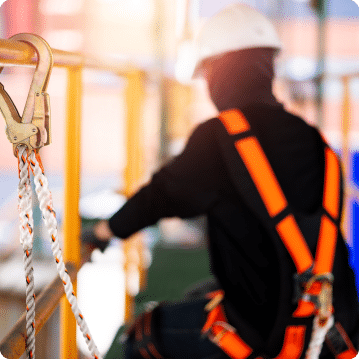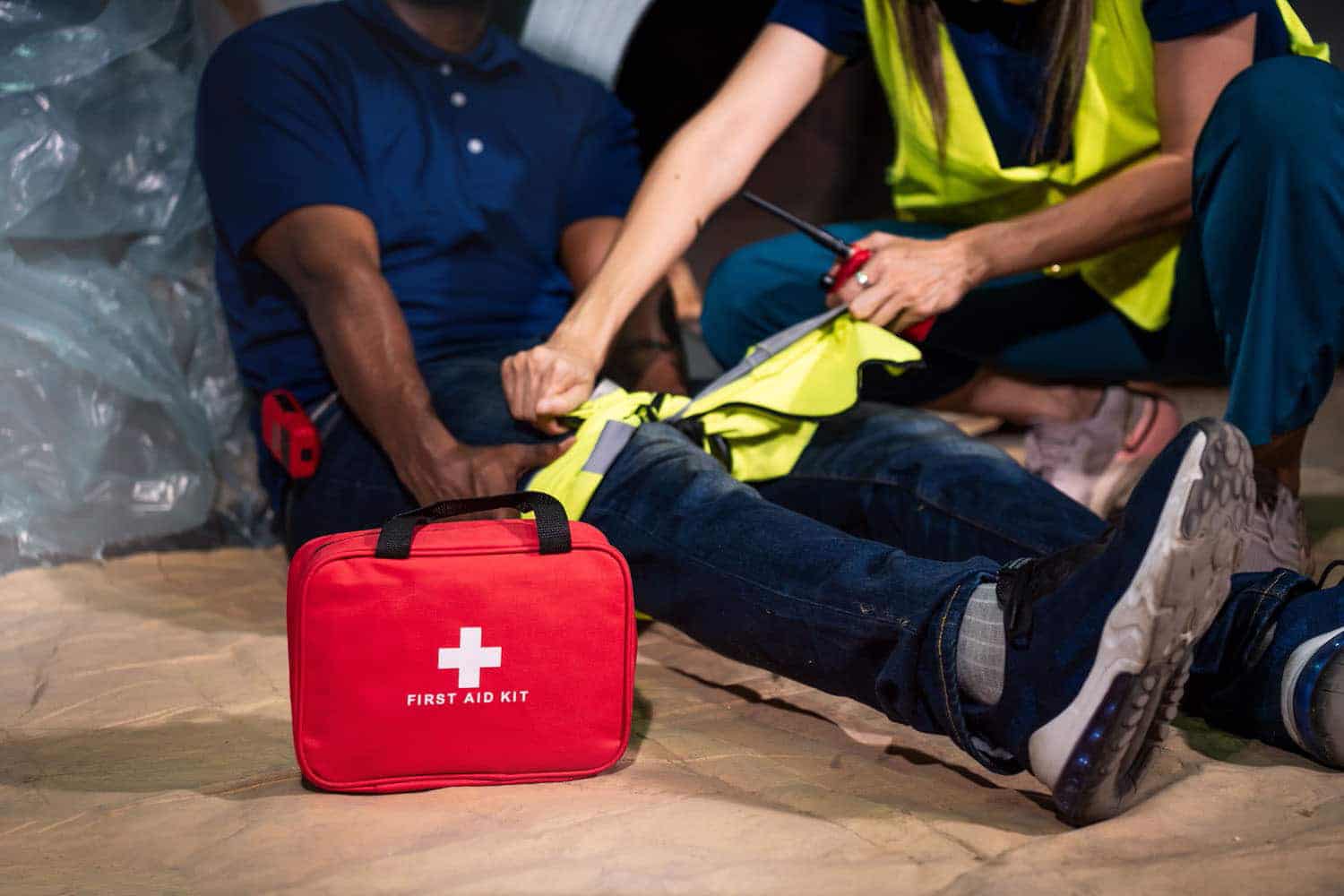
 27 May 2019
27 May 2019or the best level of protection at your workplace you need both the right procedures and the best fall prevention equipment. At Haz-ed we recognise that every workplace is different, which is why it’s best to tailor the fall prevent equipment to the individual business and the application or the environment it will be used in.
The following covers some of the essentials in fall prevention equipment including harness, lanyard, belt and buckle safety equipment.
Harness
Harnesses are a lifesaver if you or your employees continually or occasionally work at heights. At Haz-ed we recommend a full body harness that’s correctly fitted. Workers should connect the fall-arrest line to the attachment point on their harness that will provide the best protection in the situation it is being used.
To avoid putting yourself in a risky situation we recommend that you inspect your fall prevention equipment prior to every use.
Related Article: Fall Prevention Devices
Alongside the manufacturer recommendations your gear, we suggest looking out for the following during the safety inspection:
- Begin by holding the harness up by the D-ring.
- Bend the straps in an inverted “U.”
- Watch for frayed edges, broken fibers, pulled stitches, cuts or chemical damage.
- Check D-rings and D-ring metal wear pads for distortion, cracks, breaks, and rough or sharp edges.
- The D-ring bar should be at a 90 degree angle with the long axis of the belt and should pivot freely.
- Attachments of buckles and D-rings should be given special attention.
- Note any unusual wear, frayed or cut fibers, or distortion of the buckles. Rivets should be tight and unmovable with fingers.
- Body side rivet base and outside rivets should be flat against the material.
- Bent rivets will fail under stress.
Lanyards
For those working at great heights safety lanyards are the vital link to the fall protection anchor point. Short sections of webbing or cable are usually attached to the D-ring of a workers safety harness. At Haz-ed we recommend the following:
- Ensure a minimum of slack in the fall-arrest lanyard between the user and the attachment. The anchorage point should be as high as the equipment permits.
- Avoid work above the anchor point, as this will increase the free fall distance in the event of a fall, resulting in higher forces on the body and greater likelihood of the lanyard snagging on obstructions.
At Haz-ed we believe it’s imperative to inspect the safety of your lanyards.
- Begin at one end and work to the opposite end.
- Slowly rotate the lanyard so that the entire circumference is checked. Spliced ends require particular attention.
- Inspect snap hooks closely for hook and eye distortion, cracks, corrosion, or pitted surfaces.
- The keeper, or latch, should seat into the nose without binding and should not be distorted or obstructed.
- The keeper spring should exert sufficient force to firmly close the keeper.
- Keeper rocks must provide the keeper from opening when the keeper closes. Closing/locking mechanism should move freely without sticking or jamming.
- While bending webbing over a piece of pipe, observe each side of the webbed lanyard. This will reveal any cuts or breaks.
- The outer portion of the shock-absorbing pack should be examined for burn holes and tears.
- Stitching on areas where the pack is sewn to the D-ring, belt or lanyard should be examined for loose strands, rips and deterioration.
Belts and buckles
Belts and buckles are integral components to your fall prevention equipment and should be inspected on a regular basis. At Haz-ed we recommend the following safety checking measures:
- Begin by holding the harness up by the D-ring.
- Bend the straps in an inverted “U.” Watch for frayed edges, broken fibers, pulled stitches, cuts or chemical damage.
- Check D-rings and D-ring metal wear pads for distortion, cracks, breaks, and rough or sharp edges.
- The D-ring bar should be at a 90 degree angle with the long axis of the belt and should pivot freely.
- Attachments of buckles and D-rings should be given special attention. Note any unusual wear, frayed or cut fibers, or distortion of the buckles.
- Rivets should be tight and unmovable with fingers.
- Body side rivet base and outside rivets should be flat against the material.
- Bent rivets will fail under stress.
- Inspect frayed or broken strands.
- Broken webbing strands generally appear as tufts on the webbing surface. Any broken, cut or burnt stitches will be readily seen.
- Tongue Buckle: Buckle tongues should be free of distortion in shape and motion. They should overlap the buckle frame and move freely back and forth in their socket. Rollers should turn freely on the frame. Check for distortion or sharp edges.
- Friction Buckle: Inspect the buckle for distortion. The outer bar or center bars must be straight. Pay special attention to corners and attachment points of the center bar.
At Haz-Ed Services we offer training in working at heights courses as well as consultancy services whereby our team audit your companies current safety processes and provide recommendations. Contact us today for more information.
Recent posts
 4 April 2024
4 April 2024Haz-Ed Celebrates International Women’s Day: A Commitment to Excellence
 16 October 2023
16 October 2023OH&S Overview – Understanding Occupational Health and Safety
 20 August 2023
20 August 2023

